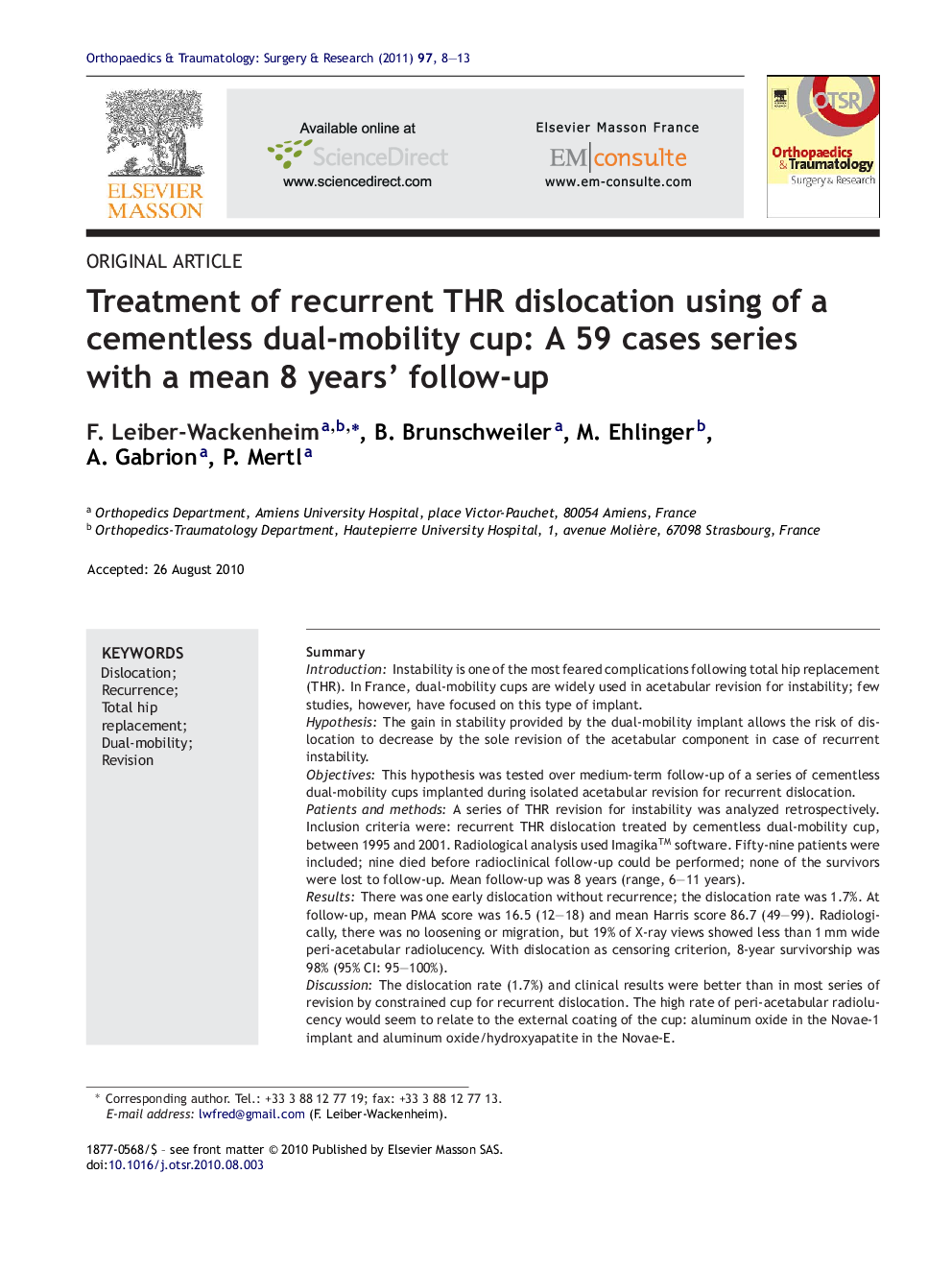| کد مقاله | کد نشریه | سال انتشار | مقاله انگلیسی | نسخه تمام متن |
|---|---|---|---|---|
| 4082123 | 1267624 | 2011 | 6 صفحه PDF | دانلود رایگان |

SummaryIntroductionInstability is one of the most feared complications following total hip replacement (THR). In France, dual-mobility cups are widely used in acetabular revision for instability; few studies, however, have focused on this type of implant.HypothesisThe gain in stability provided by the dual-mobility implant allows the risk of dislocation to decrease by the sole revision of the acetabular component in case of recurrent instability.ObjectivesThis hypothesis was tested over medium-term follow-up of a series of cementless dual-mobility cups implanted during isolated acetabular revision for recurrent dislocation.Patients and methodsA series of THR revision for instability was analyzed retrospectively. Inclusion criteria were: recurrent THR dislocation treated by cementless dual-mobility cup, between 1995 and 2001. Radiological analysis used Imagika™ software. Fifty-nine patients were included; nine died before radioclinical follow-up could be performed; none of the survivors were lost to follow-up. Mean follow-up was 8 years (range, 6–11 years).ResultsThere was one early dislocation without recurrence; the dislocation rate was 1.7%. At follow-up, mean PMA score was 16.5 (12–18) and mean Harris score 86.7 (49–99). Radiologically, there was no loosening or migration, but 19% of X-ray views showed less than 1 mm wide peri-acetabular radiolucency. With dislocation as censoring criterion, 8-year survivorship was 98% (95% CI: 95–100%).DiscussionThe dislocation rate (1.7%) and clinical results were better than in most series of revision by constrained cup for recurrent dislocation. The high rate of peri-acetabular radiolucency would seem to relate to the external coating of the cup: aluminum oxide in the Novae-1 implant and aluminum oxide/hydroxyapatite in the Novae-E.ConclusionThe use of dual-mobility cups to treat THR instability gave satisfactory results. We recommend dual-mobility cups with hydroxyapatite surface treatment over a porous metallic substrate, rather than with an aluminum oxide or an aluminum oxide/hydroxyapatite bilayer coating.Level of evidenceLevel IV. Retrospective Study.
Journal: Orthopaedics & Traumatology: Surgery & Research - Volume 97, Issue 1, February 2011, Pages 8–13